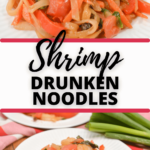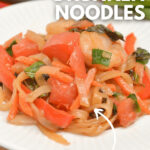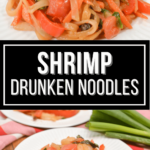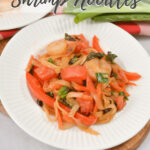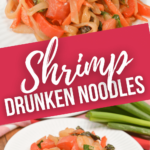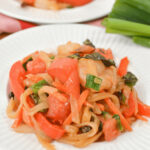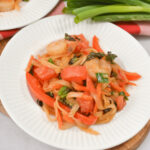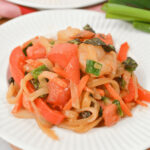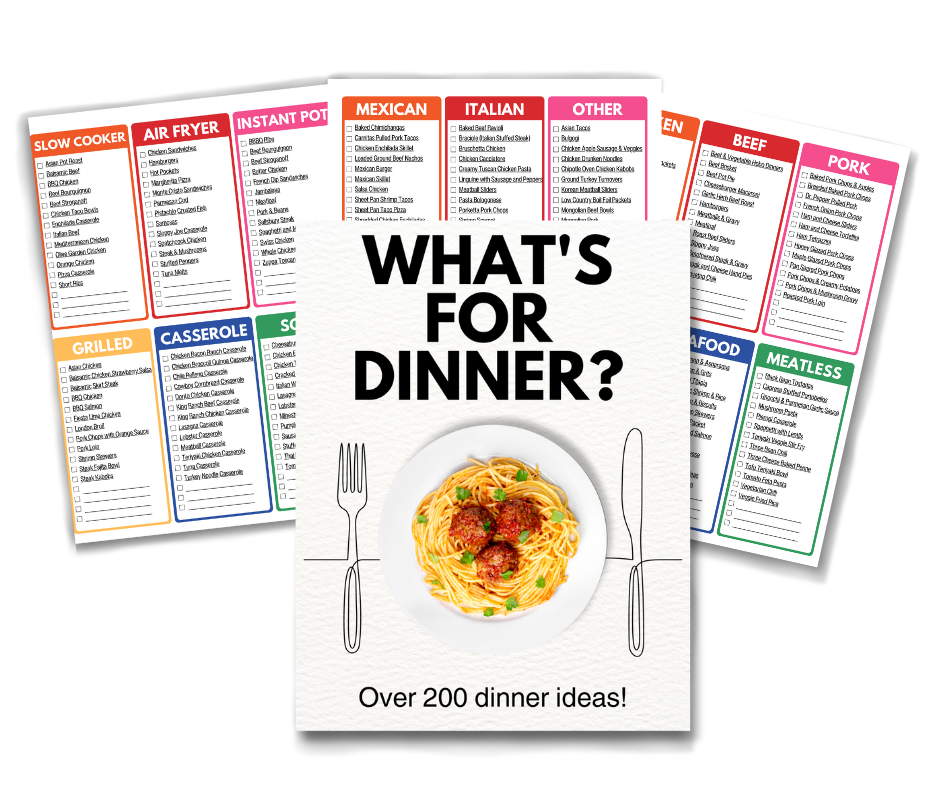Shrimp Drunken Noodles is a quick and flavorful dinner option that everyone will love! With its aromatic spices, tender shrimp, and a harmonious blend of flavors, this 30-minute recipe will tantalize your taste buds and leave you craving for more.
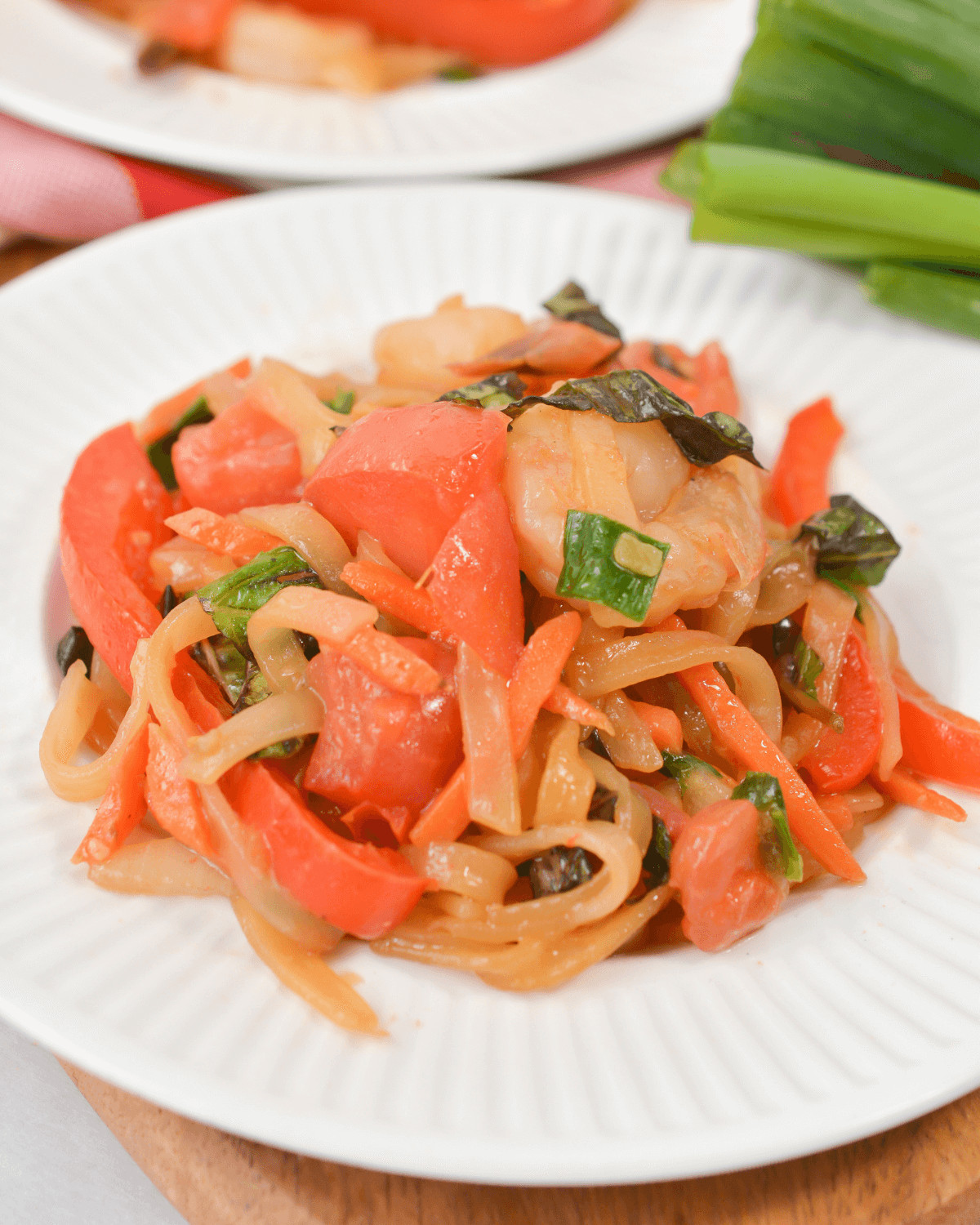
SAVE THIS RECIPE!
Enter your email below and we’ll send this recipe straight to your inbox.
Shrimp Drunken Noodles is a popular Thai street food dish that will make your taste buds dance with joy. In this recipe, we’ll guide you through creating a sensational meal that captures the essence of Thai cuisine’s bold and aromatic flavors. With a perfect balance of tender shrimp, chewy rice noodles, and a medley of spices, our Shrimp Drunken Noodles will transport you to culinary bliss.
If you’re looking for more Thai-inspired recipes, try these Thai Peanut Noodles, Thai Red Curry Chicken Soup, and Chicken Drunken Noodles.
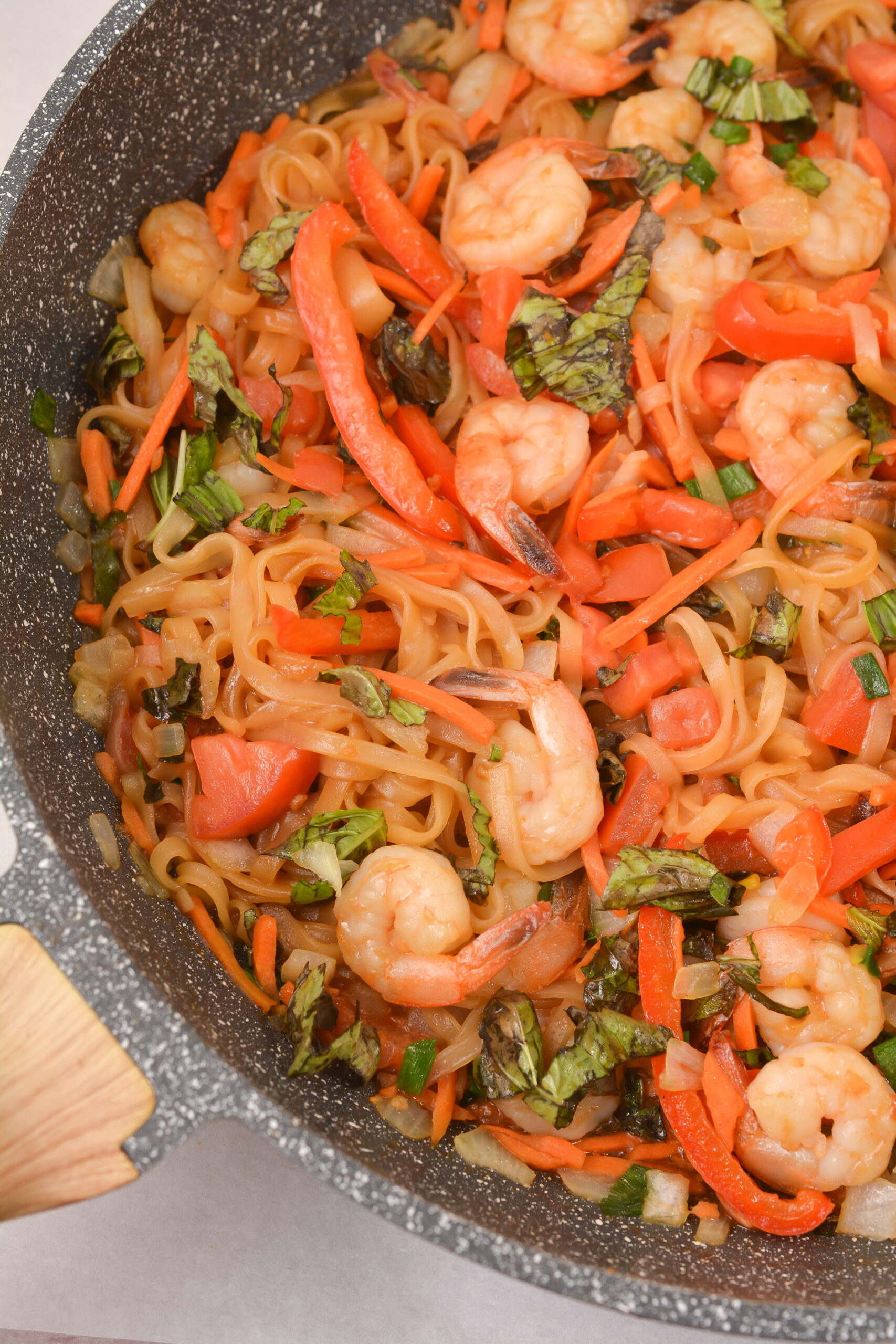
Why We Love This Thai Drunken Noodles with Shrimp Recipe
There are countless reasons to adore our Thai spicy noodles recipe. From its quick and convenient 30-minute preparation time to the ease of sourcing pantry-friendly ingredients, this dish checks all the boxes!
- 30-Minute Meal: With busy schedules, it’s essential to have quick and tasty recipes. Our drunken noodle recipe cooks in just 30 minutes, making it an ideal option for a satisfying weeknight dinner.
- Family Friendly: This dish is a hit with the whole family. The combination of tender shrimp, flavorful noodles, and a well-balanced sauce will appeal to even the pickiest eaters.
- Adaptable: Whether you’re following a low-carb, meat-free, or dairy-free lifestyle, you can easily adapt this best Thai recipe to suit your dietary needs. Simply swap out ingredients or make adjustments as necessary.
Ingredient Notes for Pad Kee Mao Noodle Dish
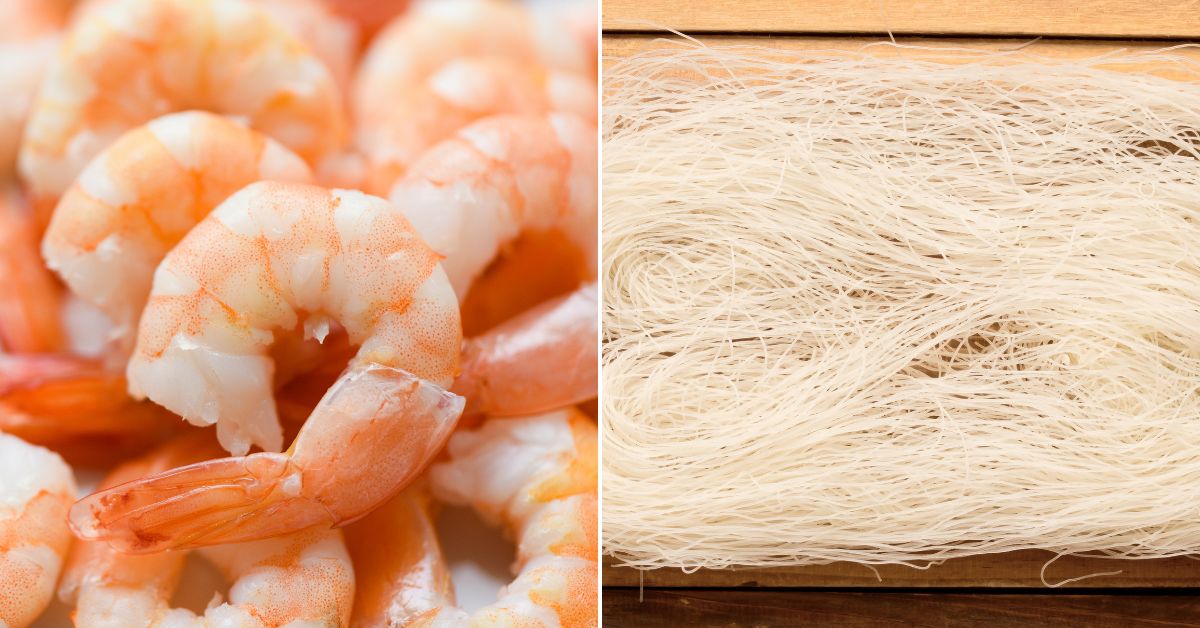
- Shrimp: This recipe tastes the best with fresh shrimp! Make sure your clean, peel and remove the vein from your shrimp.
- Rice Noodles: Wide rice noodles, also known as rice sticks or pad Thai noodles work best for this recipe. These noodles have a pleasant chewy texture and absorb the flavors of the sauce beautifully. Fresh noodles truly enhance the dish.
- Ginger Paste/Soy Sauce: Ginger paste adds a fragrant and slightly spicy kick to the dish, while soy sauce provides the essential umami flavor. If you don’t have ginger paste on hand, you can use finely minced fresh ginger instead.
See my recipe card below for a complete list of the ingredients with measurements.
Variations and Substitutions for Thai Drunken Noodles Recipe
From ingredient variations to cooking techniques, let these ideas guide you in customizing the recipe to suit your preferences and create a version that truly reflects your culinary style.
- Sriracha Sauce: Add a pop of heat to your dish by drizzling in some Sriracha sauce during the cooking process. This will elevate the spiciness and provide an extra kick of flavor.
- Cooking Variation: Experiment with different cooking methods to suit your preferences. You can grill the shrimp for a smoky flavor or even use the oven or air fryer for a crispy texture.
How to Make Drunken Noodles with Shrimp
This Thai drunken noodles dish is a total breeze to make! With just a few easy steps, you’ll have a delicious and satisfying meal on the table in no time.
These are the basic steps for making drunken noodles with shrimp. Refer to the full, printable recipe card below for detailed instructions.
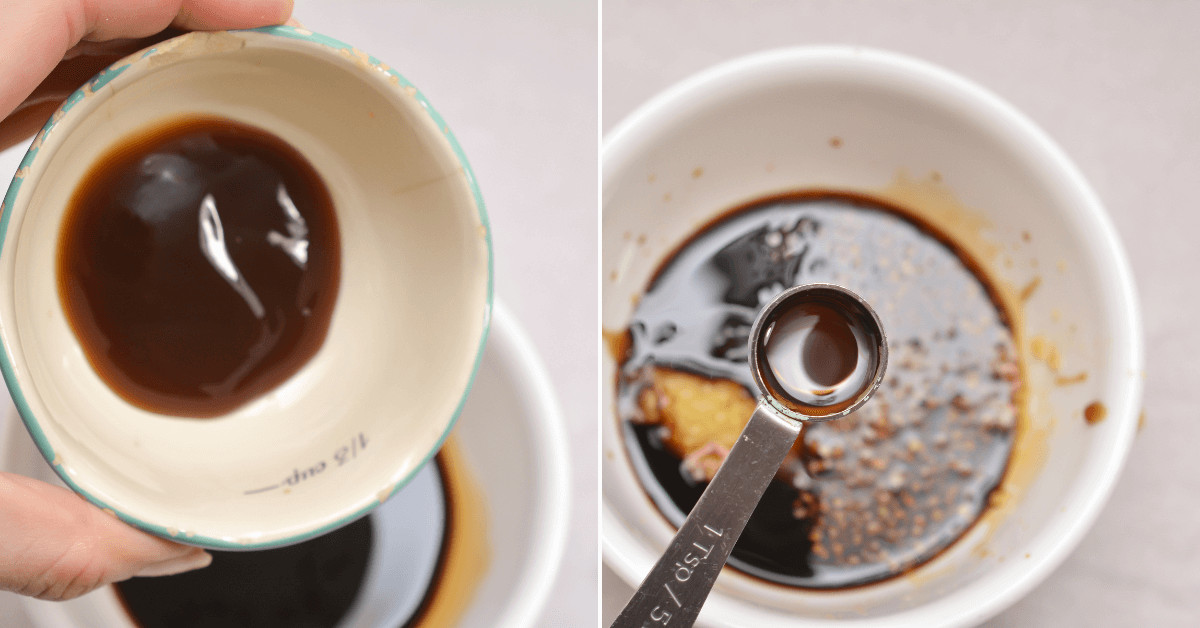
Step 1: Cook Noodles
First, cook the rice noodles to your desired doneness. Then drain the noodles, rinse under cold water, and drain any excess water.
Step 2: Saute Veggies and Shrimp
Next, place a skillet or wok over medium-high heat and heat up the oil. Add in the chopped onions and peppers and saute for about 2 minutes. Next, add in the shrimp and saute until shrimp are opaque. Stir in the tomatoes, carrots, and green onions, and continue to cook for another minute or two.
Step 3: Make Sauce
In a small bowl, add the soy sauce, oyster sauce, and other sauce ingredients and stir until well combined.
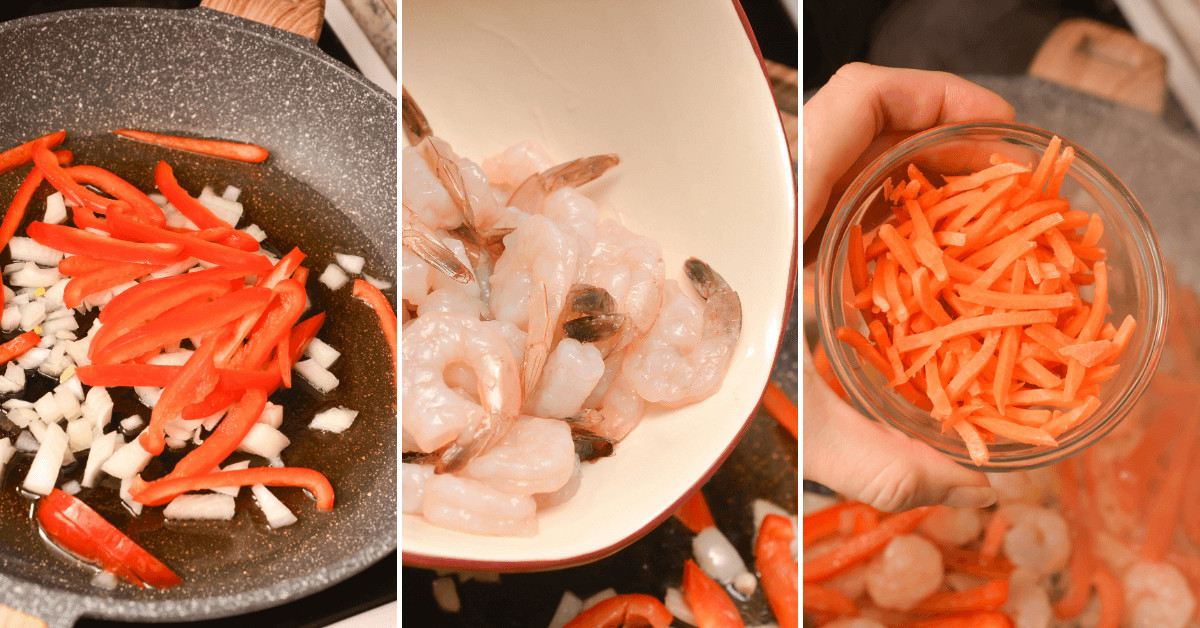
Step 4: Mix Together Noodles, Sauce, and Veggies
Finally, add the noodles to the skillet. Stir to combine the noodles with the veggies. Next, pour in the soy sauce mixture and stir, making sure all noodles are coated. Again, add a hint of freshness with chopped basil leaves and stir. Lastly, garnish with additional basil if desired.
Recipe FAQs for Noodles with Shrimp Recipe
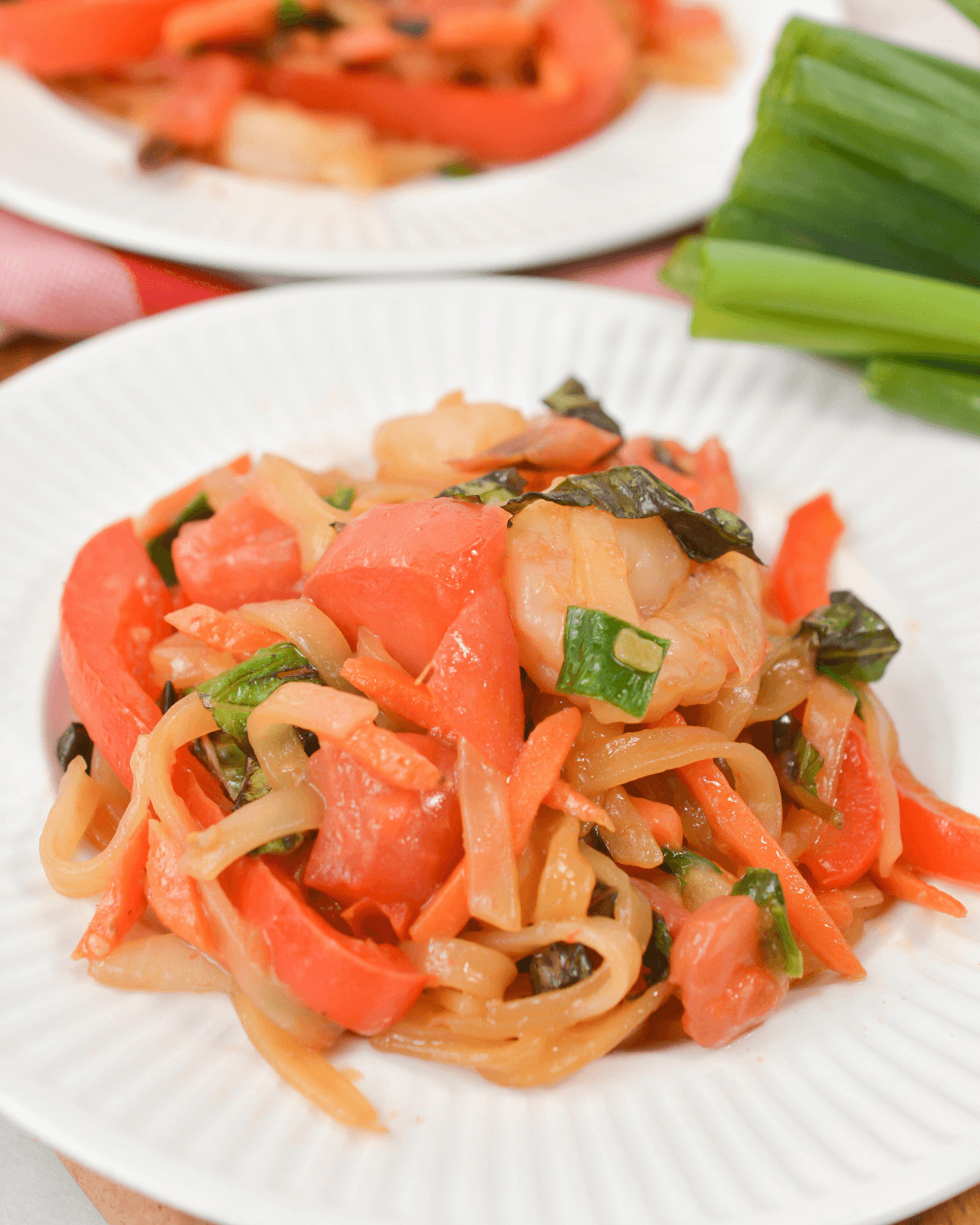
Expert Tips for Making This Spicy Thai Noodles Recipe
If you’re looking to spice up your weeknight dinners, then look no further than spicy Thai noodles. With a few simple ingredients and some basic cooking techniques, you can create a satisfying meal that will leave your taste buds tingling. So roll up your sleeves and get ready to learn how to make the best kee mao noodles right in your own home!
- Add Bacon or Pork Belly: For an extra burst of flavor, consider adding crispy bacon or succulent pork belly to your drunken noodles. Simply cook the bacon or pork belly separately until crispy, then crumble it over the noodles before serving.
- Add Zing with Lime Wedges: Lime wedges provide a refreshing and tangy element to balance the flavors in the dish. Squeeze a tablespoon of fresh lime juice over the cooked noodles or serve the dish with lime wedges on the side.
- Experiment with Veggies: Feel free to get creative and experiment with a variety of veggies. You can mix in broccoli, snap peas, mushrooms, or baby corn for added texture and color.
- Flavor: Fish sauce, Thai basil, and dark soy sauce will add flavor and make the best drunken noodles.
What to Serve with Shrimp Drunken Noodles
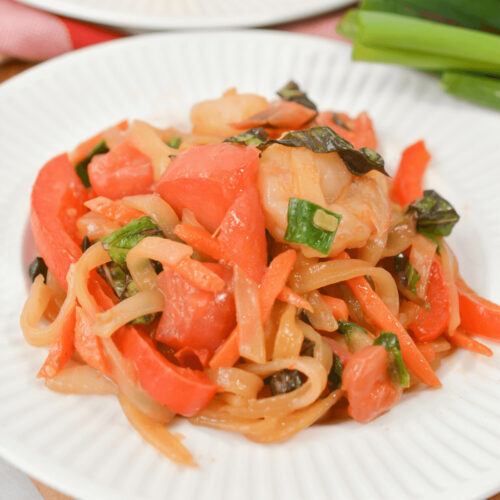
Shrimp Drunken Noodles
Equipment
- Shrimp deveiner tool
Ingredients
- 8 ounces Rice noodles
- 12 ounces Shrimp , peeled and deveined with the tails on or off
- 2 tablespoon Olive oil
- ½ cup Chopped onion
- 1 Red bell pepper , sliced
- 1 Roma tomato , chopped
- ½ cup Matchstick carrots
- ¼ cup Green onions, chopped
- ½ cup Fresh basil, chopped
Sauce
- 2 teaspoons Minced garlic
- 1 teaspoon Ginger paste
- 1 teaspoon Sesame oil
- ¼ cup Soy sauce
- 2 tablespoons Oyster sauce
- Red pepper flakes, optional
Instructions
- Prepare the rice noodles according to your preference, then rinse them with cold water and ensure they are thoroughly drained.
- On the stove, heat the oil in a skillet at medium high temperature.
- Saute the chopped onions and peppers in the skillet for 2 minutes.
- Add the shrimp to the skillet and saute until fully cooked.
- Add the tomatoes, carrots and green onions and continue to saute for an additional minute or two.
- Mix all the sauce ingredients together in a bowl.
- Combine the noodles in the skillet by stirring.
- Coat the ingredients well by pouring the sauce into the skillet and tossing.
- Add the basil and serve right away.
Expert Tips
- Add Bacon or Pork Belly: For an extra burst of flavor, consider adding crispy bacon or succulent pork belly to your drunken noodles. Simply cook the bacon or pork belly separately until crispy, then crumble it over the noodles before serving.
- Add Zing with Lime Wedges: Lime wedges provide a refreshing and tangy element to balance the flavors in the dish. Squeeze a tablespoon of fresh lime juice over the cooked noodles or serve the dish with lime wedges on the side.
- Experiment with Veggies: Feel free to get creative and experiment with a variety of veggies. Try adding broccoli, snap peas, mushrooms, or baby corn for added texture and color.
Estimated Nutritional Information
The nutritional information provided are estimates. To learn more about how I calculate this information go to www.itisakeeper.com/about-its-a-keeper/privacy-disclosure-policies/
This recipe is my personal adaption of an ethnic-inspired recipe. It is not intended to be an authentic recipe. I’ve recreated this recipe because I enjoy the flavors and I want to encourage my readers to expand their tastes and try new flavor combinations. The recipe, ingredients, and processes may have been adapted to make the recipe accessible to the average American. I have provided links to authentic versions of the recipe in the post above. I encourage you to visit these pages and learn more about the traditional version(s) of this recipe.

